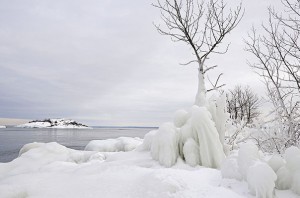With two consecutive cold days in mid-January and inclement weather last week, some students have been wondering how school officials justify cancelling classes due to bad weather.

Director of Public Safety and Police Services Mike Bath said such a decision is situational, and pinpointing the particular amount of snow that may result in cancelled classes is nearly impossible.
“It’s not necessarily just how much snow,” Bath said. “It’s more a combination of how much snow, the visibility, and the forecast — that’s the big one.”
Last Thursday, Jan. 31, Public Safety went through the process of calling a potential snow day, but did not complete the process on grounds of little snow being in the forecast.
“We went through the whole process, but the forecast was such that the snow had stopped already and it was more of a cleanup as opposed to [issues with] road conditions,” Bath said. “We had in fact talked with the grounds guys and they figured they’d have everything cleaned up so that we could operate under normal conditions. But if it was going to be storming until 2 p.m., we would have done something a little differently.”
Grounds maintenance is one of the top priorities in the event of inclement weather, and being able to clear sidewalks and roadways in time for students and faculty to arrive on campus is one of the main concerns when discussing the potentiality of a snow day.
“Our main concern in regards to whether or not school is open or closed is our ability to clear the parking lots and sidewalks of snow so that faculty and staff and students are able to access buildings,” said Kathy Richards, associate vice president of engineering and planning. “[We have to] make sure that they have safe passage.”
And with so much riding on the decision of canceling classes — including professors getting behind on lesson plans and therefore students getting behind on assignments — it’s important for the decision to be made collectively among many different campus officials.
“Simply missing those two days had a real effect on due dates for at least two different assignments,” Sandra Burr, a professor in the English department, said. “Those kinds of things trigger an accumulation effect, almost like the domino effect, and some classes can be more dramatic than others.
“But it can really be a nightmare.”
The process of closing campus begins at around 4:30 a.m. on mornings when the weather is expected to cause issues. Bath said the initial course of action involves checking with the National Weather Service (NWS) to verify what is happening outside and what is expected in the forecast. In the event of snow, road reports and conversations with the road commission are the next step.
“We’ll talk to the grounds department and see what their time frame is in being able to clean campus up prior to school starting,” Bath said. “Then they call me and I get all the information and then I contact the provost, Dr. Paul Lang, and collectively we make a determination one way or the other.”
In discussing the importance, and ultimate decisiveness, of looking at the forecast for the coming day, Bath recalled a situation in early 2012 when this forecast system applied perfectly.
“There was a day where we called school and there was green grass showing,” he said. “It didn’t start snowing until about 11 a.m., but by 1:30 p.m. we had almost a foot of snow on the ground and you couldn’t see the front of your car.
“That was based on the predictions of what they thought was coming. It’s hard to cancel school when there’s grass outside the window, but that day the weather turned and we based a lot of it on that. But you have to look at every (potential snow day) based on the circumstances involved.”





























